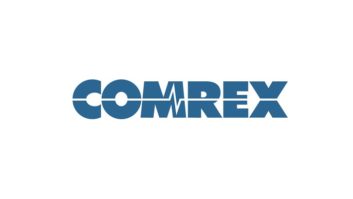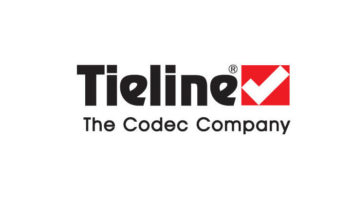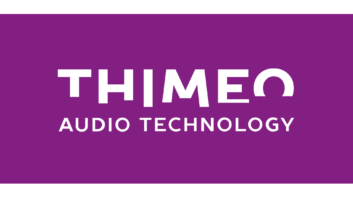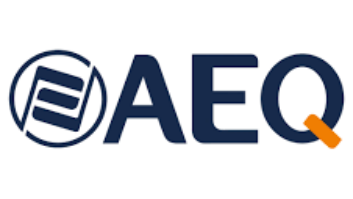
John Lackness One year ago, Radio World asked several experts to discuss trends in the broadcast codec technology arena (Jan. 2, 2013). It was a popular topic, so we return to it now to learn more and find out what’s new in a set of four Q&As. Replies were via email and have been edited for length.
John Lackness is VP Sales Americas for Tieline.
What’s the most notable improvement in codec technology?
Lackness: Rapid improvements to IP network infrastructure have led to broadcasting over the public Internet becoming a new paradigm for many radio engineers and even some codec manufacturers. Cost pressures and demands to improve the bottom line have also driven broadcasters away from leased lines, ISDN and satellite IP into terrestrial IP networks for STL and audio distribution more generally.
Many engineers have traditionally been concerned about broadcast reliability over unmanaged IP networks, so I believe the most important recent innovation in codec technology is the establishment of STL-grade reliability over imperfect IP networks like the Internet. This is achieved using codecs capable of dual redundant IP packet streaming.
These codecs simultaneously send redundant data streams from different Ethernet ports. This delivers seamless redundancy by switching back and forth, without loss of audio, from the nominated primary data link to the backup link if one fails and then subsequently recovers. Using IP links from two different IP network providers delivers optimal redundancy over mission critical STL connections.
A number of other IP strategies can work in tandem with this technology to optimize reliability and audio quality; elements like forward error correction (FEC) and automatic jitter buffering, which adjusts packet buffering according to the prevailing health of the IP network at any given time.
What’s “state of the art” in algorithms right now?
Lackness: Without doubt the audio codec making the biggest impact globally in a multitude of applications is the open-source codec Opus. Tieline sees Opus as a game changer for the industry, just like MP3 was in the 1990s, and has added it to the Genie and Merlin codec families as well as the Report-IT Enterprise smartphone app.
Opus incorporates technology from the well-known SILK and CELT codecs and is adaptable to both low-latency speech and high-quality music applications. As a variable bit-rate algorithm it is ideal for a wide variety of broadcast applications because of its capacity to deliver high-quality, real-time audio over IP at low bitrates, and ultra-low delay audio at higher bitrates.
Opus has been ratified by the IETF and validated by the EBU, however development is continuing in order to further improve the current implementation.
You released new firmware in one of your codecs; why is it notable?
Lackness: A recent firmware release delivered four innovative new audio distribution configuration options for Genie Distribution and Genie Distribution WheatNet-IP audio codecs. These solutions were developed as part of ongoing product improvement as well as customer feedback.
New connection options include broadcasting 3 x bidirectional stereo connections, or 2 x stereo and 2 x mono bidirectional connections, or 1 x stereo and 4 x mono bidirectional connections, or 6 x mono bidirectional connections. These solutions are ideal for broadcasters distributing different programs from a single site to different IP addresses, depending on the number of streams in use.
Another firmware release due in early 2014 will allow these codecs to multi-unicast three different stereo audio streams to up to 15 connections each, or broadcast three separate stereo streams in multicast server mode and distribute each of these streams to unlimited endpoints over compatible IP networks.
Other important new or features as we come into spring NAB season?
Lackness: Tieline launches 2014 with the release of a new cost-effective, high-performance, point-to-point and multi-point stereo IP audio codec called Bridge-IT Xtra.
Bridge-IT Xtra is recommended for low-cost studio-to-transmitter links (STLs), studio-to-studio links and affordable remote broadcast links. The codec has dual internal power supplies and supports six stereo multi-unicast audio streams over the public Internet. You can also combine Bridge-IT Xtra with Tieline’s Report-IT Enterprise smartphone app to create a cost-effective, high-quality remote solution.
Standard broadcast algorithms include Tieline Music and MusicPLUS, LC-AAC, HE-AAC v.1 and v.2, AAC-LD, AAC-ELD v1 and v2, aptX Enhanced, MPEG Layer 2, G.711, G.722 and MP3 playback. It also features an SD/SDHC card slot for MP3 or linear audio backup.
What relevance, if any, does the new AES67 standard have on you and your users?
Lackness: The new AES67 standard addresses the audio transport mechanism and the clocking scheme required to achieve interoperability over competing IP standards, but this is only part of the story.
Tieline’s technology partner Wheatstone Corp. was an active contributor to the AES X-192 project group, which defined the AES67 standard. WheatNet-IP equipment will be compliant with the standard; however total interoperability also requires logic control for all peripheral equipment at the control layer — elements such as routing control, turning sources on and off, and gain control. This will require agreement on additional standards for interoperability between competing IP ecosystems.
Genie Distribution with WheatNet-IP and Merlin PLUS with WheatNet-IP codecs will offer AES67 interoperability via their onboard WheatNet audio card.
Assess the impact of the decline in POTS, ISDN and other services.
Lackness: It is true that POTS and ISDN services are declining in importance throughout the U.S. and parts of Europe as IP becomes the predominant transport for carrying broadcast services. Drivers of this change include the rapid improvements to wired and wireless IP infrastructure and the cost advantages offered by IP networks. Telcos are also influencing change by removing copper infrastructure in some places and not installing new ISDN services in others.
Nonetheless, ISDN and POTS services will coexist with IP for some time yet in many regions, so flexibility is paramount. Engineers can choose broadcast codecs capable of connecting over more than one audio transport, which provides opportunities to connect over IP, ISDN or POTS as required. This will assist as they transition to IP-only technology over time, or allow them to integrate backup connections on alternative transports should IP services become unavailable.
Do you foresee a day when broadcasters don’t even need specialized “broadcast” codecs?
Lackness: In a perfect world of fiber to every premise, it is conceivable that specialized broadcast codecs may no longer be required. However in a world where terrestrial fiber is unlikely to be installed on such a large scale any time soon, broadcast codecs are here to stay for the foreseeable future.
Running fiber to isolated STL transmitters over large distances with difficult terrain presents other infrastructure challenges. Not to mention cost considerations, and the integration of reliable backups over alternative networks in case primary connections fail due to a backhoe severing the fiber!
Comment on this or any story. Email [email protected] with “Letter to the Editor” in the subject line.











